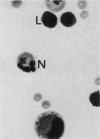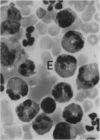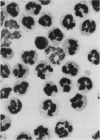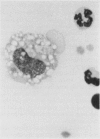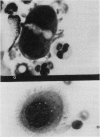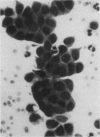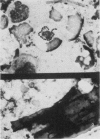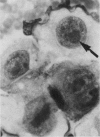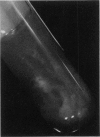Abstract
A retrospective study of bovine peritoneal fluids collected over a two year period was conducted. Of a total of 66 cattle studied, 31 had a nonseptic peritonitis, 11 acute bacterial peritonitis, eight ascites and 16 miscellaneous disorders such as abomasal impaction, enteritis and lymphosarcoma. Peritoneal fluid analysis was a useful aid in the diagnosis of abdominal disorders of cattle, especially as hematological changes were absent in many cases. Due to relatively low nucleated cell counts in bovine peritonitis, all parameters (i.e. nucleated cell count, total protein and differential cell counts) must be evaluated before interpretation. A nucleated cell count of greater than 6000 cells/μL and total protein content of greater than 3 g/dL was consistent with the diagnosis of peritoneal inflammation in 80% of the cases studied. An atlas of cell types common to bovine peritoneal fluid is presented.
Full text
PDF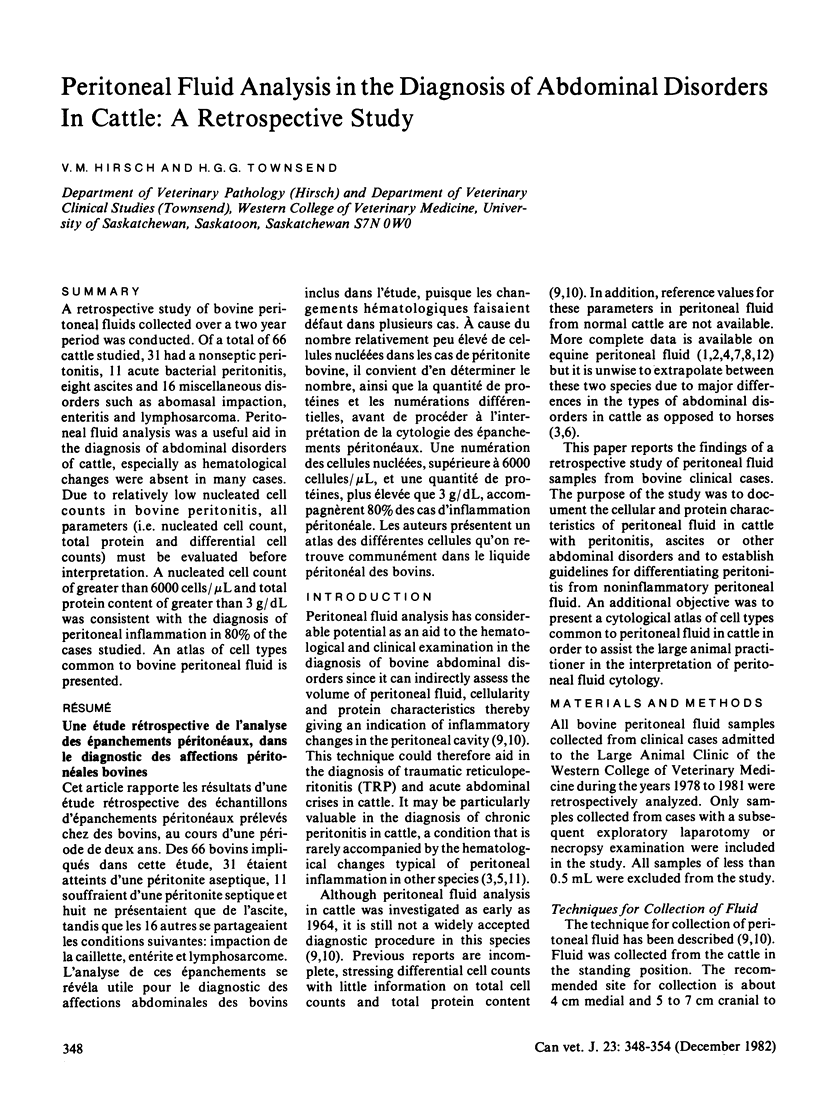
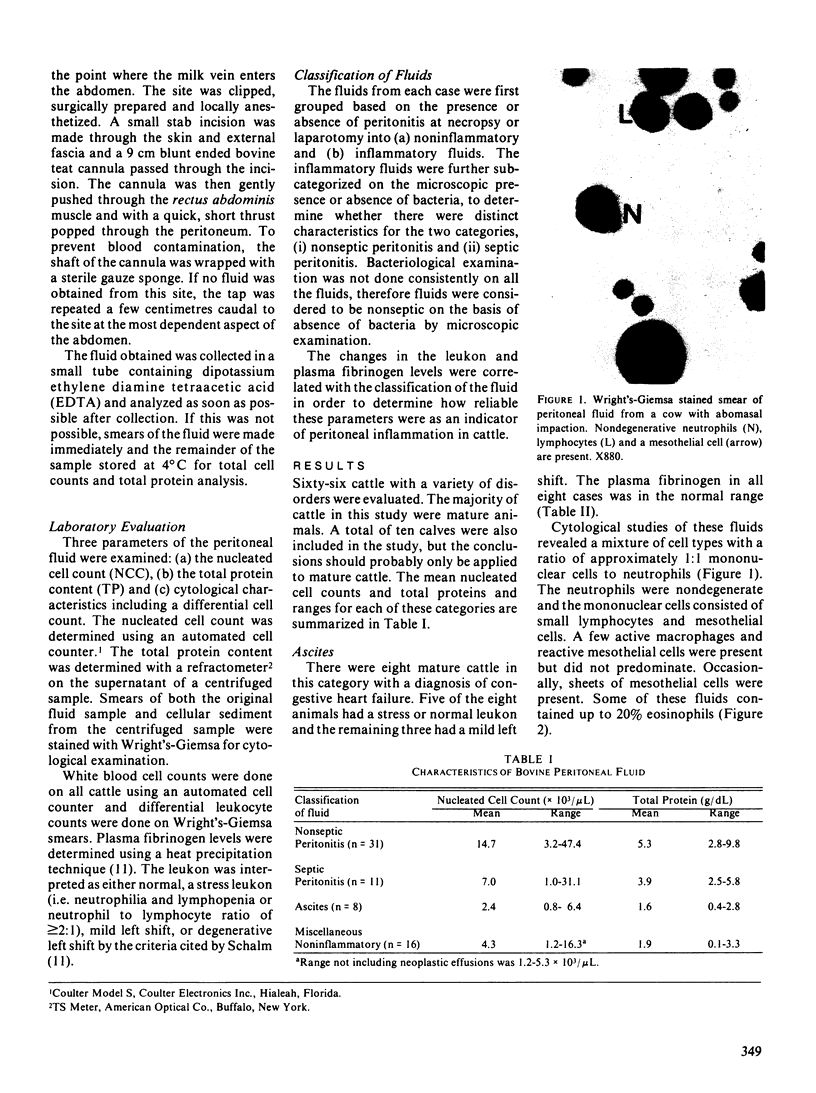
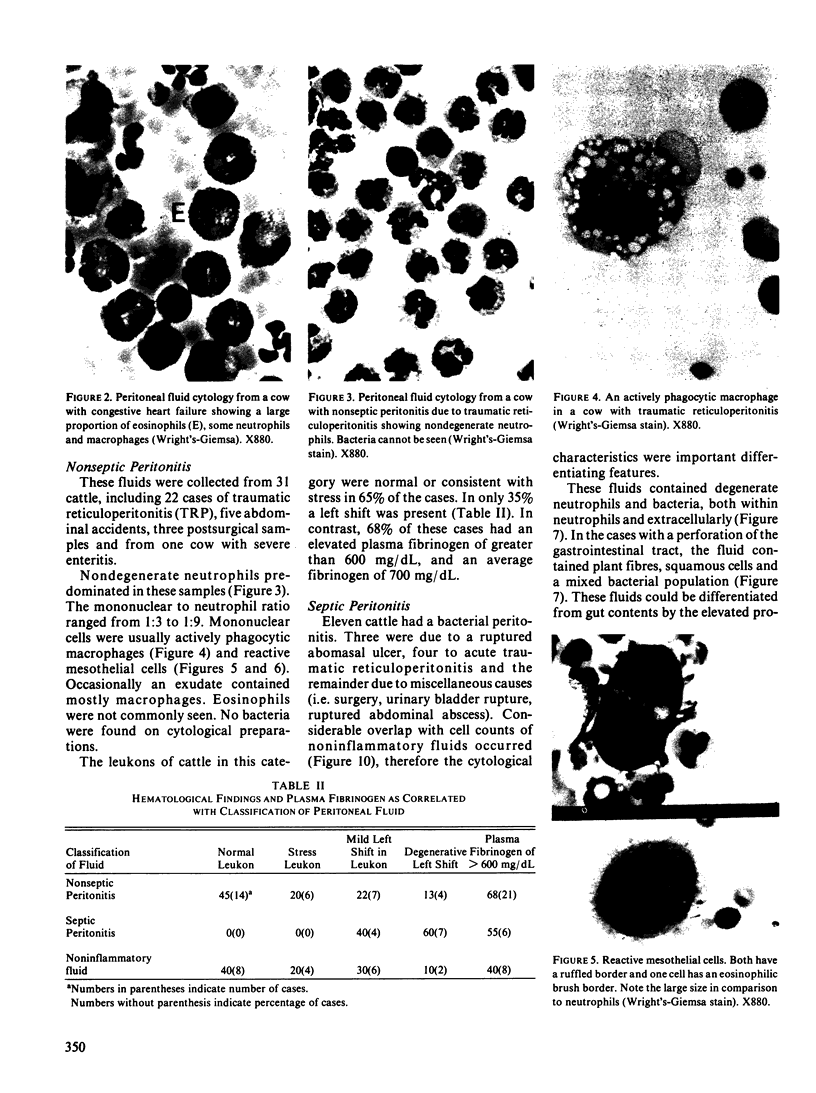
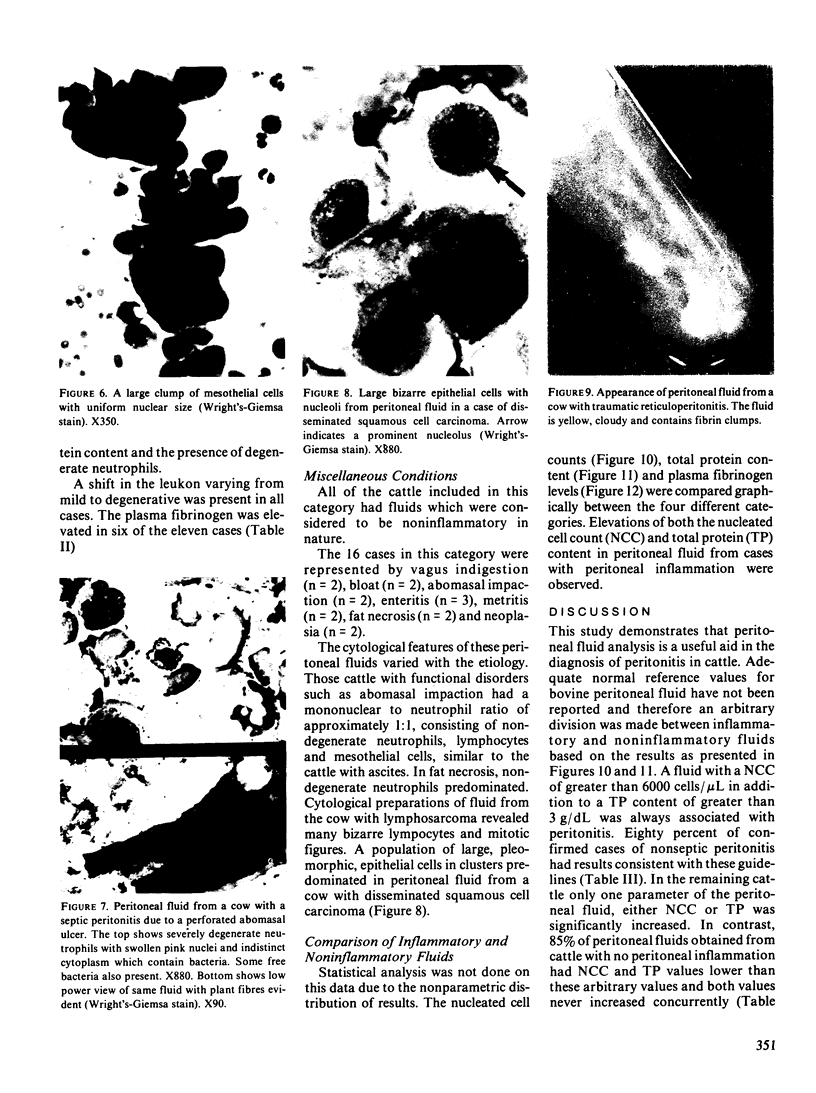
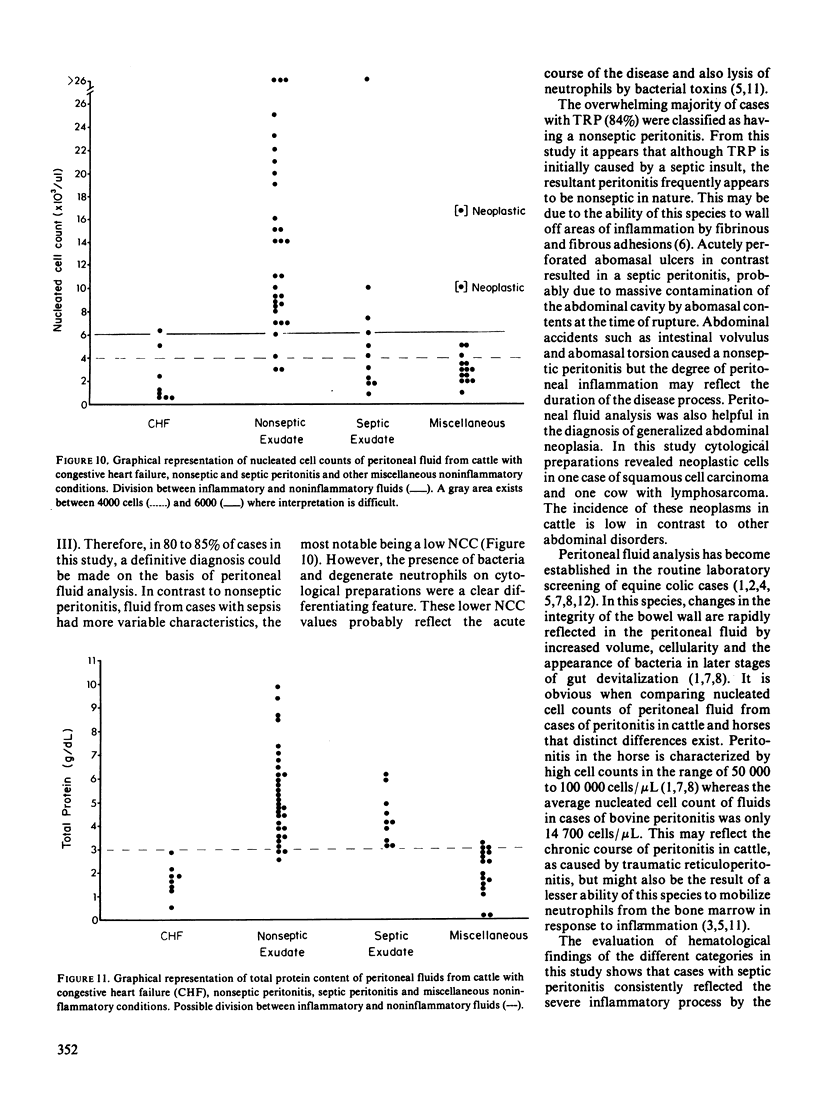
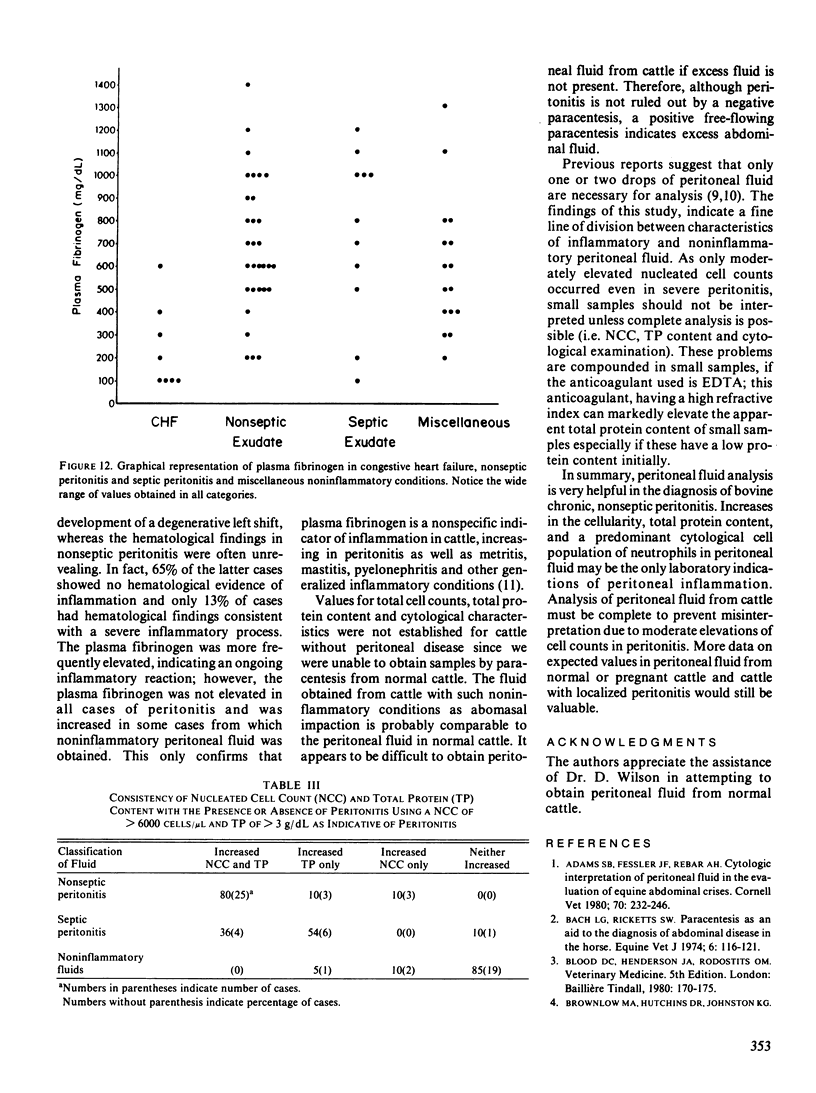
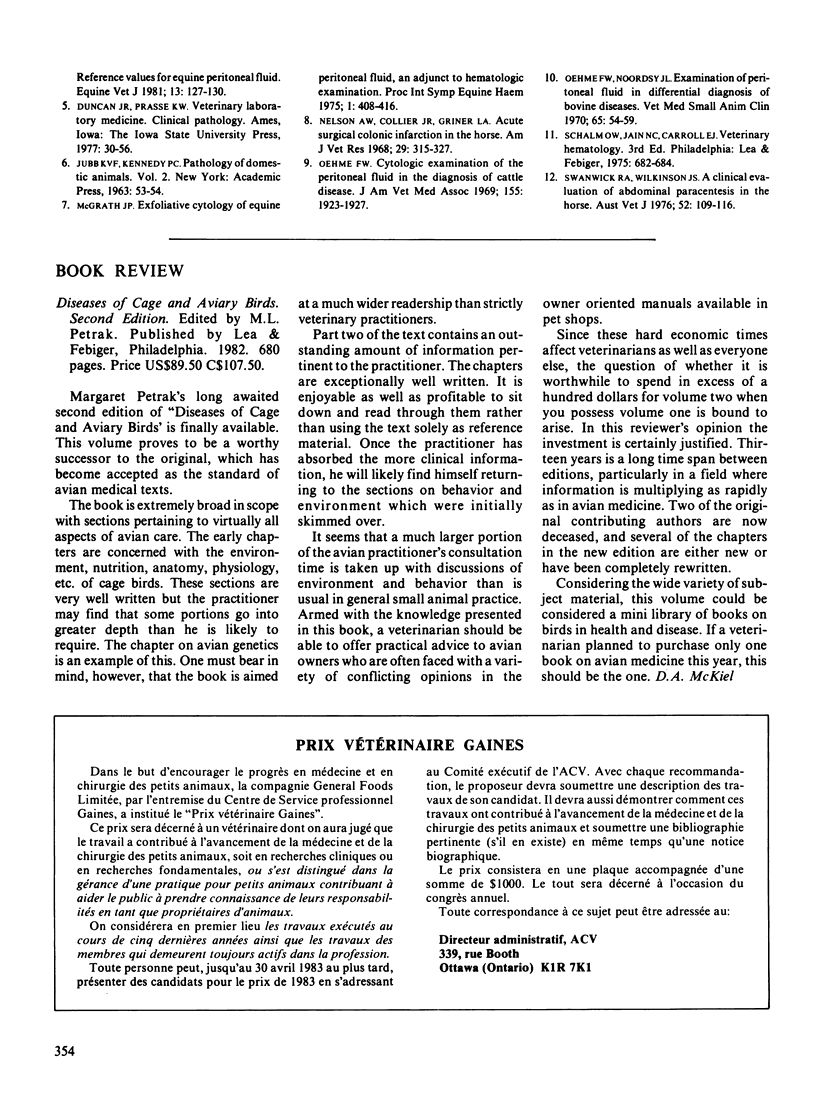
Images in this article
Selected References
These references are in PubMed. This may not be the complete list of references from this article.
- Adams S. B., Fessler J. F., Rebar A. H. Cytologic interpretation of peritoneal fluid in the evaluation of equine abdominal crises. Cornell Vet. 1980 Jul;70(3):232–246. [PubMed] [Google Scholar]
- Bach L. G., Ricketts S. W. Paracentesis as an aid to the diagnosis of abdominal disease in the horse. Equine Vet J. 1974 Jul;6(3):116–121. doi: 10.1111/j.2042-3306.1974.tb03943.x. [DOI] [PubMed] [Google Scholar]
- Oehme F. W. Cytologic examination of the peritoneal fluid in the diagnosis of cattle disease. J Am Vet Med Assoc. 1969 Dec 15;155(12):1923–1927. [PubMed] [Google Scholar]
- Oehme F. W., Noordsy J. L. Examination of peritoneal fluid in differential diagnosis of bovine diseases. Vet Med Small Anim Clin. 1970 Jan;65(1):54–59. [PubMed] [Google Scholar]
- Swanwick R. A., Wilkinson J. S. A clinincal evaluation of abdominal paracentesis in the horse. Aust Vet J. 1976 Mar;52(3):109–117. doi: 10.1111/j.1751-0813.1976.tb05440.x. [DOI] [PubMed] [Google Scholar]



